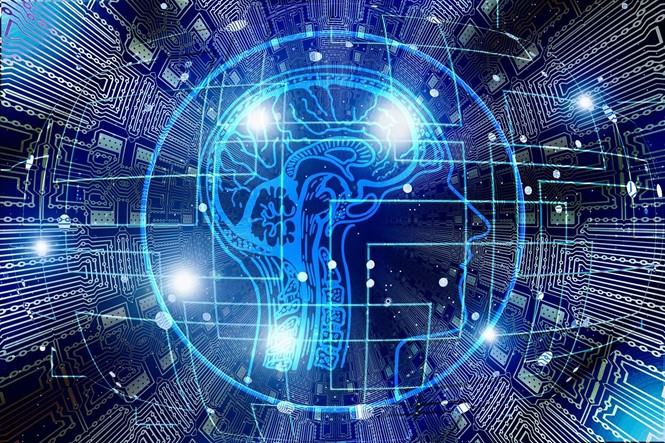Why Design Needs Humans (And Humans Need Design)

Some might argue artificial intelligence will be the future of design and others may also agree its speed and efficacy will greatly help the industry. However, AI lacks a fundamental aspect that is a design non-negotiable: emotion. Conor Birney, group design director at indie creative agency Madwell writes about the importance of design empathy and how it is essential in solving crisis and dealing with people-centred problems.
Somewhere, right now, a freezer is making ice. A laptop is streaming a movie. And a colourful, friendly program is designing a business card. It’s a decent-enough business card. It has all the right information—email, phone number, URL—and it looks pretty good. The program doing this is doing it everywhere, all at once. It’s letting one person promote their brand in less time than it takes to grab a snack, even while it plasters logo after logo onto t-shirts or coffee mugs for someone else. It’s doing its thing at speed, in quantity, and at scale.
AI is coming for design. And it’ll do great. After all, machines are naturals at alignment, pattern, and repetition. Machine learning will make short work of mastering contrast, balance and proportion. The art of kerning typography is more of a science with computer precision, and the internet provides endless libraries to achieve perfect colour harmony.
As for us: we’re helping them.
We already think in systems. We justify our logo designs with dotted overlays depicting their precise geometry. We create strict brand guidelines in fine detail. With each update, our design tools coax us to hand over more and more of the production labour, tempting us with the ease of creating layout grids, colour palettes, and isolated imagery with a single click. And often, pressed for time, we do.
At the same time, as we work to bring greater mechanical precision to what we do, the machines outpace and under bid us. They generate infinite formulaic design versions to choose from. And they don’t need to sleep to do it. They don’t take weekends off. A robot won’t dig in its heels over feedback that doesn’t compute—it’s all ones and zeroes anyway. A program can’t be distracted by emotion.
But I’m not worried. Because unfortunately for our mega-efficient kin, that last one is an Achilles heel and a deal-breaker. Emotion, empathy, curiosity, and compassion—all those slow-going emotional cost centres—are design non-negotiables. They’re what allow us to read a room and see more than furniture and walls.
Design During Crisis
Take COVID-19 as an example. It’s one thing to replicate and syndicate and move information. Inputs and outputs. But how well does AI respond when logic is tested, or when its audience is uncooperative? For well over two straight months, that was the reality in which we operated. One thing was true before another was truer, and on some spectrum of panicked to disbelieving, most of us were hard to reason with.
It wasn’t our fault. Consider that a global crisis, especially in this day and age, brings with it a ceaseless stream of information that can easily drown a fear-fogged audience. In this case, more is not more; organising and adapting information to account for constant change, or managing an audience whose processing power is limited by fear, becomes vastly more important than injecting more messages into the system. Can machines hold back from adding to the flood? Can they plan for an audience that is sceptical, distracted, anxious, depressed, overwhelmed? Would they be able to strike the right balance between directness and reassurance?
The answer is a resounding “maybe, sometimes”—and that’s nowhere near good enough. It’s the design minds who leverage strength in their humanity who provide the well-timed life raft of clarity that can float above it all.
Any Given Monday
Design empathy is essential in a crisis, when we’re all stakeholders and when lives are at stake. But there’s a world of life on either side of a crisis, and empathy is the starting point for design thinking in those ordinary circumstances, too. Empathy is as valuable as it is because design problems don’t exist in a vacuum. They’re always linked, even if abstractly, to the people experiencing that problem.
Take any website, from a simple brochure site to an e-commerce juggernaut. The visual details come into play only after you’ve thought through every angle of the user’s experience. We get to know entire personas, building complex lives for them to help better anticipate their needs. We imagine their days so as to provide organic paths to the information they’re looking for. A beautiful design is not effective if it doesn’t connect with the intended audience by solving the problem at hand. A satisfying interaction along a meaningful journey, on the other hand, can feel like scratching a hard to reach itch.
Curiosity is Unprogrammable
Even more than identifying our users’ feelings, empathy and curiosity allow us to really understand them, and understanding is essential for providing meaningful solutions.
It’s a shared strength; we all have it. It’s that curiosity that leads many of us to be designers in the first place. We look to understand the world around us and help translate it for others. We look in on different industries, take in the sights and send postcards home proclaiming that everything is interesting. Sometimes we repeat what we’ve seen before; that’s learning. We’re inclined to experiment and try new, even illogical, things. That unpredictability is priceless. And machines don’t have it.
Machines are better organised, better makers of systems, better at completing a task to the teensiest detail. To that I say: awesome. Welcome. Because in the end, it’s our humanity that holds all the keys. Our imperfections, our emotions, our experiences with the illogical and the random and with each other—embracing those qualities are what allow us to connect with each other, help each other. It’s what makes us human. Let’s put it to work.












